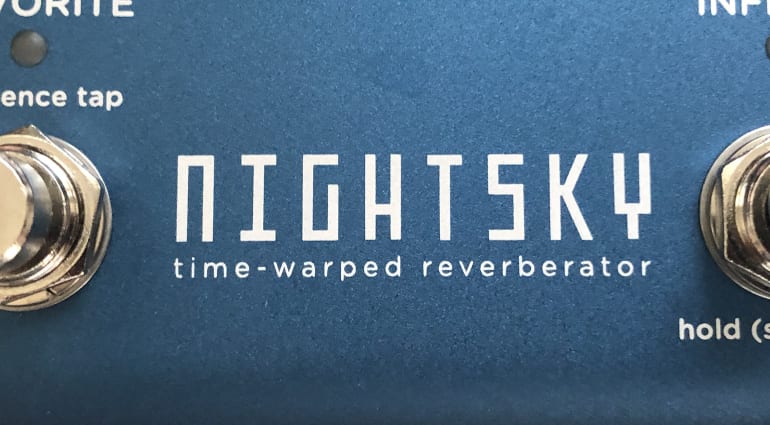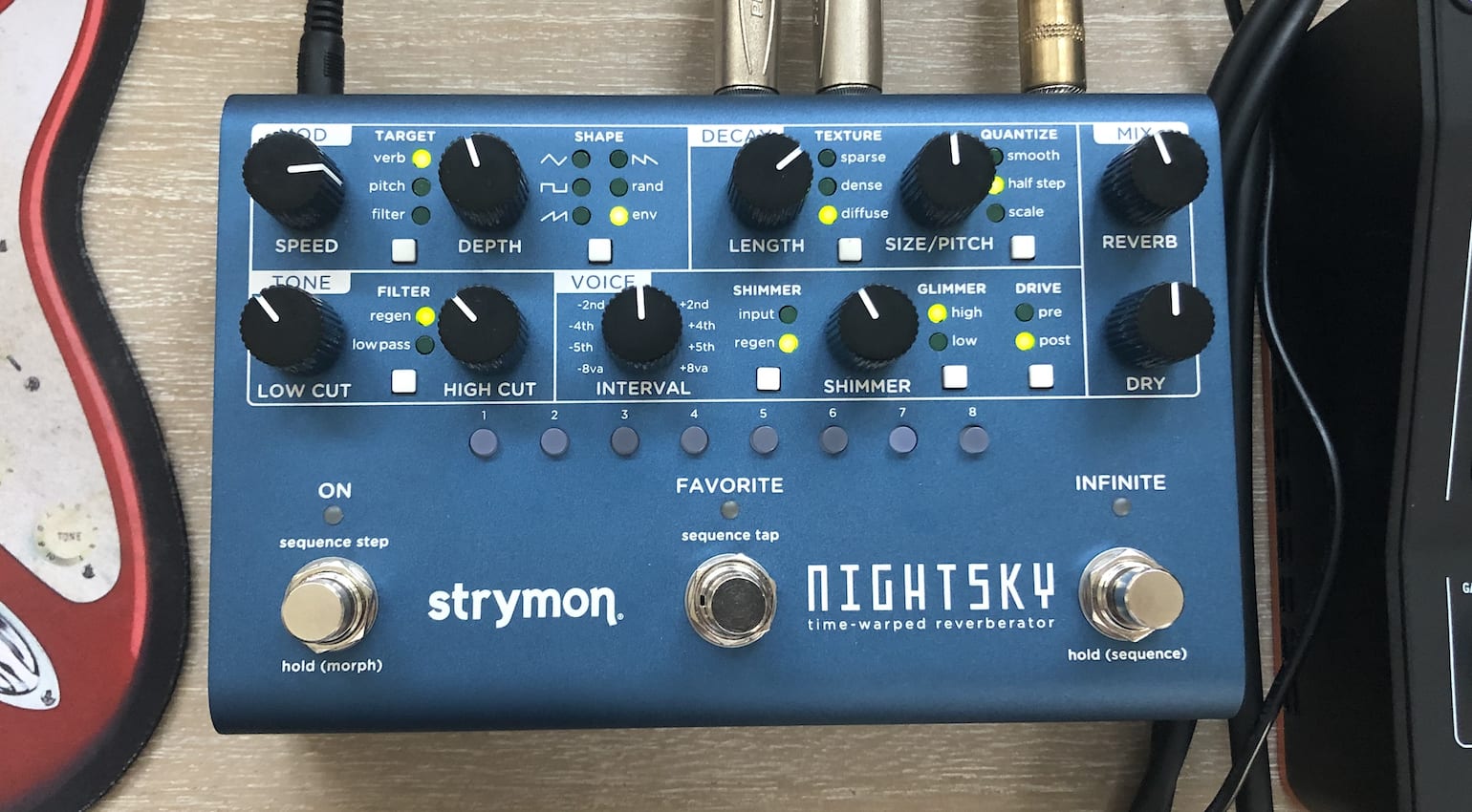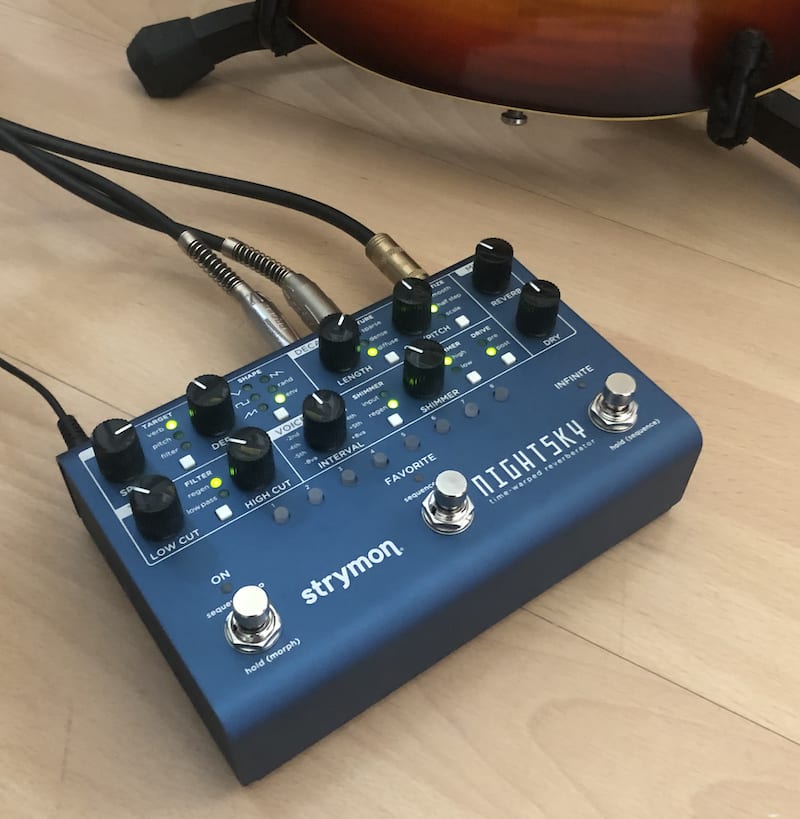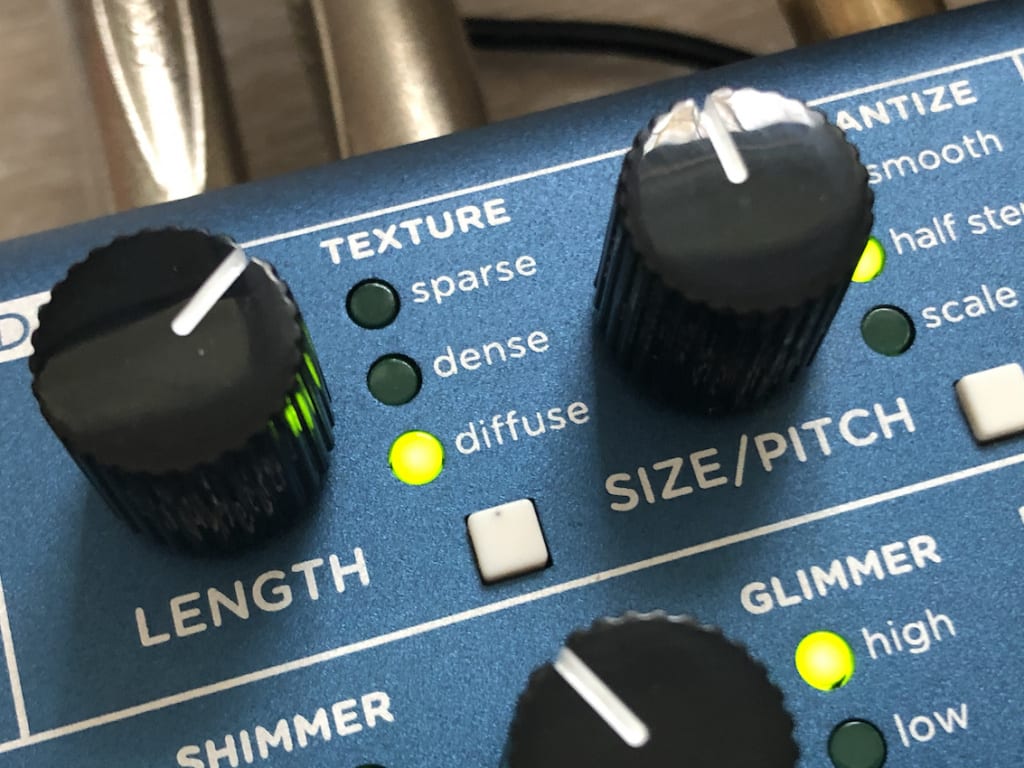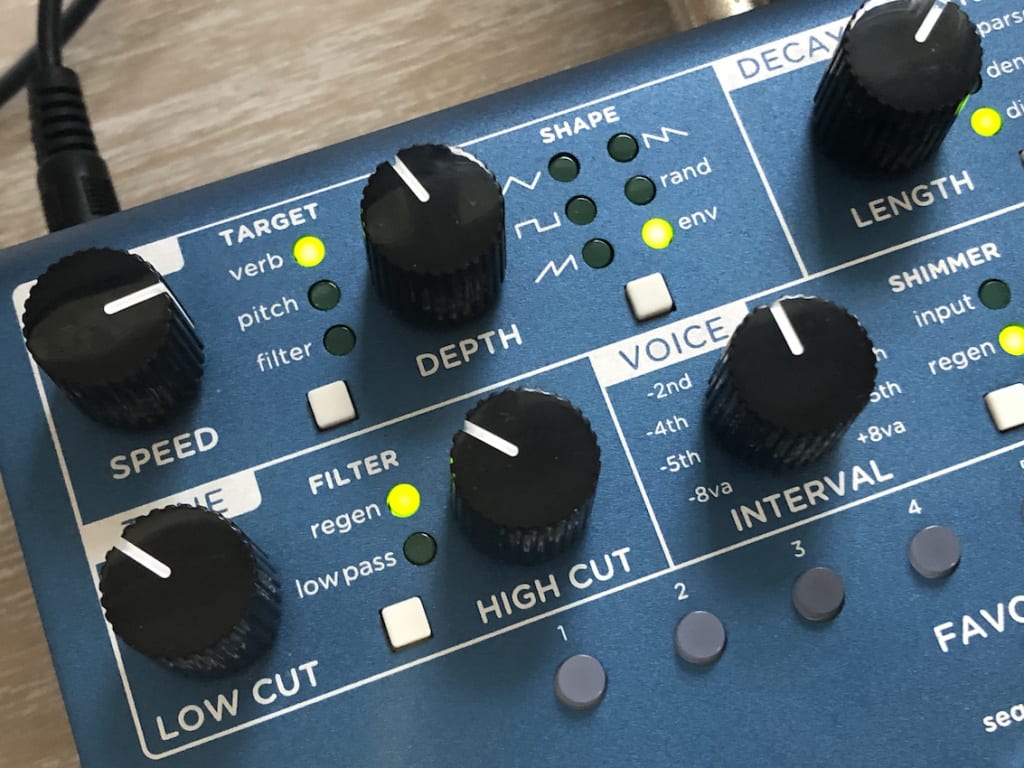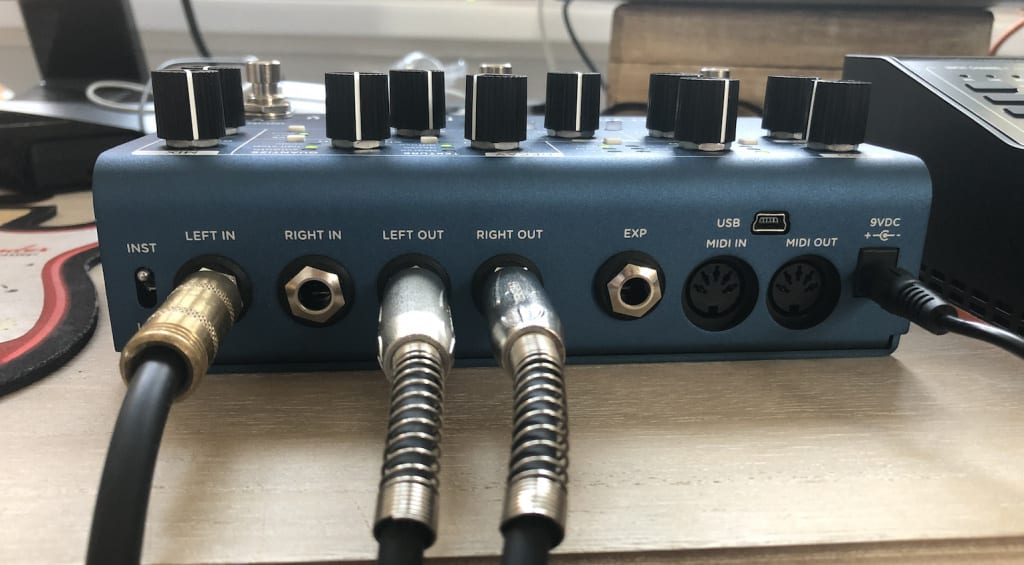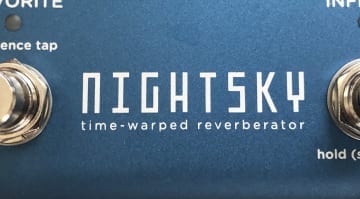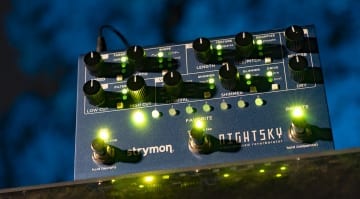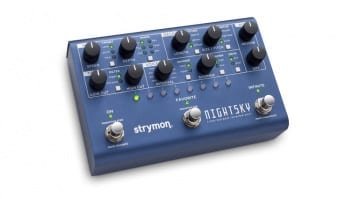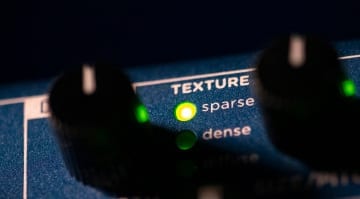Strymon NightSky Review: Reinventing the Reverb?
Strymon is no stranger to reverb pedals. The BigSky and BlueSky have both become staples on many a pedalboard. The NightSky is the company’s latest, much-hyped reverb unit. How does it fare? Let’s take it for a test ride… Strap on your spacesuit.
Strymon NightSky
Strymon were kind enough to lend us a NightSky, announced a few months ago, for a spin. The company calls it a “Reverberant Synthesis Machine” which basically means that it has more functions than you can shake a stick at. Strymon claims to have rewritten “The Rules of Space and Time” with the NightSky. Has it succeeded?
Out of the Box
The pedal comes in a robust enclosure and is finished in a fetching dark blue, keeping with the company’s blue-themed reverb pedals. You get ten knobs and a host of buttons that may seem daunting at first, but a casual play-around reveals them to be quite self-explanatory, and easy to use. There are no real hidden menus that need to be navigated (although there are a few ‘secret’ functions). The unit is a manageable size, and should easily find space on most pedalboards. But maybe the pedalboard is not where it will find its home. Inside the box you’ll find a Quick Start Guide leaflet, a power supply, a USB-cable, four rubber feet, and a Strymon sticker.
The NightSky also comes with MIDI control. But for the purpose of this review, I ran it straight with a mono guitar input, out into amps, and an audio interface.
First Impressions
Like most guitarists, I promptly put the guide leaflet aside and plugged my guitar straight into the NightSky and out into an amp, clicked the ‘On’ footswitch and played a chord. Immediately, a beautiful, lush and dreamy reverb filled the room. The 8 buttons above the three fotswitches bring up the presets, of which there are 16. Presets 1 – 8 light up green, but pressing the button again will give you presets 9 – 16 and the buttons will turn orange.
The controls for the pedal are divided into 4 segments: MOD – for modulation effects, DECAY – sets the reverb and tail characteristics, TONE – controls the high and low frequency portions of the reverb, VOICE – controls the pitch, harmonics and distortion of the reverb signal, and MIX – which adjusts the amount of dry or reverberated signal. You can find more info on the pedal on Strymon’s website, where you can also check out the manual and the many functions it provides.
Space and time
I had planned to spend the first day with the pedal without having a look at the manual, to see how I would get along with it. That turned into two days. The reason being that the NightSky is not only an enhancement tool for a guitar player, but can also be used as an accompaniment, and, I found, is an instrument in its own right.
Hitting a note and pressing the Infinite footswitch holds that note… infinitely. Once this signal is passing through the unit, you can put the guitar aside and experiment with the various controls. I discovered that with the Length knob dimed, the Size/Pitch knob basically acts like a mono synth of sorts. The accompanying button lets you choose how you transition from the notes, with Smooth, Half Step, or Scale intervals. Very cool! So the first two days with the pedal were spent dialling in outlandish melodies and tones, much to the chagrin of my cat (and my neighbours, I’m sure). I still hadn’t put it into stereo, and so far, hadn’t even glanced at the manual.
You are currently viewing a placeholder content from YouTube. To access the actual content, click the button below. Please note that doing so will share data with third-party providers.
However, since I was sent this to review, I begrudgingly started going through the manual (it’s 50 pages long!). But before venturing any further, I ran it through my interface to split the signal into stereo, to truly get the most out of the pedal. Of course, you can also send the signal out to two separate amps, but I felt I could have a more balanced output if I sent it through my interface, as I don’t have two identical amplifiers.
DECAY
You can choose one of three textures, sparse, dense and diffuse. When in Sparse mode, the pedal behaves a bit like a delay, albeit washed in a glorious thick reverb. You can then use the Size/Pitch knob to control the repeat pattern, which will ping-pong between the left and right output if in stereo. Dense is a more traditional reverb sound, while Diffuse has a sort of pre-delay that swells after the initial attack. The Length knob controls the duration of the reverberated effect. All the sounds were throughly useful, and provide everything from subtle, to outright cosmic sonic landscapes.
Turning the Size/Pitch knob, you also control the pitch of the reverberated signal, as I mentioned above. When in the Scale setting, you can choose the scale you want by pressing the Quantize button and the corresponding preset button, from 1-8.
MOD
The Modulation section comes with four wave options, and a Target button that selects how the modulation effects the reverb. You can then dial in the amount of modulation using the Speed and Depth knobs. This is where things start getting a bit tricky, as all the controls on the unit interact with each other. While the verb mode simply affects the reverb signal, the pitch mode interacts with the Size/Pitch control, and the filter mode modulates the High Cut control. Playing around with all three can get you some rather nice and subtle effects. Or, you could put it on the Pitch mode to get quite ‘out there’ sounds.
The Shape button selects one of four different modulation waveforms, or a rand setting, where it will cycle through the different waveforms in a random fashion. The env mode responds to playing dynamics, with increased sensitivity as the Depth knob moves clockwise.
Some very interesting effects can be had. To hear precisely what was going on, I would play a staccato note or chord and listen to it deform and disintegrate, and be pulled and stretched. I’m not sure if I would employ the more extreme modulations in live settings, but they’re very fun, and definitely a useful tool when coming up with ideas.
VOICE
The VOICE section lets you adjust the reverb’s harmonic structure. You can add Shimmer, Glimmer, or Drive. The Interval knob sets the interval of the shimmer. You can choose from one of two types of shimmer effects; input adds shimmer to the reverb core input, while regen adds a regenerating shimmer effect. The Glimmer highlights the harmonics, focusing on either the high or low bands. The Drive section also has two options, pre and post, which applies clipping before and after the reverb core, respectively.
The intervals are all musical, and sound like a heavenly choir against the backdrop of your initial signal. This is what I meant when I said earlier that the unit works as an accompaniment. It really does sound like a celestial string section of sorts. Slowly, I was beginning to understand what Strymon were alluding to when it said it had rewritten the rules of space and time.
You are currently viewing a placeholder content from YouTube. To access the actual content, click the button below. Please note that doing so will share data with third-party providers.
TONE and MIX
The TONE and MIX sections are relatively straightforward compared to the rest of the pedal. The Low Cut knob removes the low-end frequencies as it is turned up, and the High Cut knob does the same, but with top-end frequencies. The Filter button lets you select between the regen – regenerative damping, or low pass, which removes low-end from both the output and reverb core, giving a decidedly synth-like feel. The Dry and Reverb knobs adjust the level of the input signal and the effect. Because the pedal is so dynamic, I was really enjoying turning the Dry knob all the way down and having the unit behave as a pad.
SEQUENCER
Holding the Infinite footswitch activates the sequencer. You can choose any, or all of the 8 presets to be part of your sequence, and tapping the Favorite footswitch will set the tempo. You can set up each of the presets any way you like, with different pitches, and listen to the NightSky sing you a little solo of up to 8 notes.
Strymon NightSky: Verdict
Although initially I was convinced I needed the NightSky, after going through the manual I’ve decided it may be a bit overkill for me. It would take me half a decade to go through every setting on offer here. And if you’re like me, you might feel the same. The NightSky is fantastic if you’re into experimental soundscapes, or really enjoy tweaking your effects. And if you’re a producer, it may even prove to be an invaluable tool in your arsenal. The possibilities truly are limitless. And it responds extremely well to dynamics.
But, as a guitar player, if you know the sound you’re looking for, you’re probably better off with one of the thousands of other effects on the market. That is in no way a shortcoming of the pedal, it’s just that in my hands, much of the NightSky would go to waste. I use reverb to add a bit of dimension to my sound, whereas the NightSky is much, much more than that. It’s like playing with an angelic string section, or at its weirdest, is probably what the universe sounds like if you were a spectator standing outside space and time.

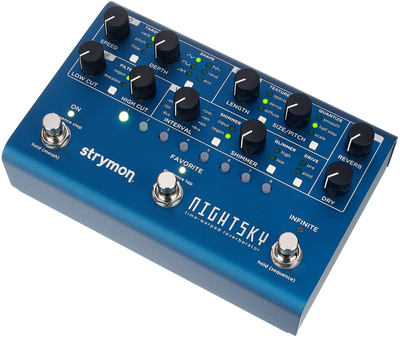
More Information
* This article contains affiliate links that help us fund our site. Don’t worry: the price you pay always stays the same! If you buy something through these links, we will receive a small commission. Thank you for your support!

 5,0 / 5,0 |
5,0 / 5,0 | 